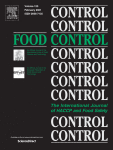Ver ítem
- xmlui.general.dspace_homeCentros Regionales y EEAsCentro Regional Mendoza - San JuanEEA MendozaArtículos científicosxmlui.ArtifactBrowser.ItemViewer.trail
- Inicio
- Centros Regionales y EEAs
- Centro Regional Mendoza - San Juan
- EEA Mendoza
- Artículos científicos
- Ver ítem
Effect of different closure types and storage temperatures on the color and sensory characteristics development of Argentinian Torrontes Riojano white wines aged in bottles
Resumen
During aging, most bottled white wines lose their distinctive organoleptic characteristics according to their storage conditions (closure, temperature, time). However, the effect of these factors on organoleptic characteristics of Torrontes Riojano wines (TRw) has not been studied yet. This study aimed at evaluating the combined effect of closure type and storage temperature on the organoleptic properties development of TRw over a 18-month aging period,
[ver mas...]
During aging, most bottled white wines lose their distinctive organoleptic characteristics according to their storage conditions (closure, temperature, time). However, the effect of these factors on organoleptic characteristics of Torrontes Riojano wines (TRw) has not been studied yet. This study aimed at evaluating the combined effect of closure type and storage temperature on the organoleptic properties development of TRw over a 18-month aging period, during which wine was bottled with natural (C) and synthetic (SyC) corks, and screwcaps (SC). Bottles were kept 18 months in thermostatized chambers (15°C; 25°C). At different aging times, consumed oxygen (CO), SO2, total phenols (TP), color, and sensory properties were evaluated. CO, TP, and browning index evolutions depended on the interaction between closure and temperature, whereas CIELAB parameters (lightness, chroma, hue) depended on closure-time and temperature-time interactions. At both storage temperatures, SC had a lower hue decrease and a lower chroma increase than C and SyC. The highest temperature prompted a more yellow and darker color of TRw. Thus, it allowed discrimination throughout the process. Considering the aging process, their aromatic intensity, fresh fruit, and yellow and green nuances decreased, while brown hue, color intensity, linalool, and oxidized character rose as their storage time was increased. At the end of their aging, TRw kept to 15°C were not differenced by closure, and they were characterized by their fresh fruit, floral, and high aromatic intensity attributes. At 25°C, SyC presented higher color intensity and herbaceous characters, while C and SC showed a more oxidized character. In conclusion, the interaction closure type-storage temperature is critical for organoleptic stability properties of bottled TRw during aging. Thus, screwcaps and low-temperature storage conditions can preserve the TRw varietal characteristics, increasing their shelf-life significantly.
[Cerrar]

Fuente
Food Control : 108343 (Available online 14 June 2021)
Fecha
2021-06
Editorial
Elsevier
ISSN
0956-7135
Documentos Relacionados
Formato
pdf
Tipo de documento
artículo
Proyectos
(ver más)
INTA/PNAIyAV-1130032/AR./Tecnologías de transformación de alimentos.
Palabras Claves
Derechos de acceso
Embargado
 Excepto donde se diga explicitamente, este item se publica bajo la siguiente descripción: Creative Commons Attribution-NonCommercial-ShareAlike 2.5 Unported (CC BY-NC-SA 2.5)
Excepto donde se diga explicitamente, este item se publica bajo la siguiente descripción: Creative Commons Attribution-NonCommercial-ShareAlike 2.5 Unported (CC BY-NC-SA 2.5)

